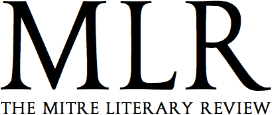Dr. Johnson’s St Andrews Lament
Samuel Johnson and his Scotch companion James Boswell embarked for Scotland ‘in the autumn of the year 1773’, and their excursion was written up by Johnson as A Journey to the Western Islands of Scotland (1775). This classic travel book contains a fascinating entry for St. Andrews.
The Scottish tour provided for Johnson what has been called ‘a realm of experience foreign to the Enlightenment illuminati of London and Edinburgh’. Johnson said simply, ‘I saw a quite different system of life.’
Shades of the Scottish past darkened in distinct bands as Johnson and Boswell journeyed north – beyond Inverness was ‘a much harsher world’, which manifested itself both in difficulty of travel and in the destruction wrought by the Highland clearances, which had swept away the ancient Gaelic speaking culture that had existed from the Highlands to the Islands of Scotland.
But Johnson began his tour in the civic Scotland of the east coast, passing from Edinburgh to St. Andrews, and then to Aberdeen. If the northern regions revealed a half-forgotten Gaelic past, St. Andrews was a relic of Catholic Scotland, formerly pious, learned, and grandiose.
Johnson found a cathedral ruined, locals carrying away its stone for their own houses, the whole site cluttered with rubbish, and a mad old woman living in a hole – but he saw beyond its decay and demise, that it had been once ‘a spacious and majestick building, not unsuitable to the primacy of the kingdom.’
The university itself was in a parlous condition, entering its eighteenth century slump. Neither flourishing nor utterly ruined (as were the churches), Johnson saw the university ‘pining in decay and struggling for life’. As for numbers, against our six thousand, at the time of Johnson’s visit there were one hundred students – St. Mary’s divinity faculty capable, but not holding, fifty; and fees were £10 for poorer students.
Though Johnson considered the town ‘a place eminently adapted to study and education’ still a sense of unease remained in his memory after the visit’s accidental pleasantries – he notes excellent hospitality – had been enjoyed. What are today admired as romantic ruins – the cathedral, the castle, St. Mary on the Rock –, Johnson saw, with greater insight, as ‘mournful monuments’ to a lost civilisation. (Incidentally, the one really impressive remain, St. Rule’s Tower, they completely overlooked.)
Dr. Johnson concludes summarily: ‘The kindness of the professors did not contribute to abate the uneasy remembrance of an university declining, a college [St. Leonard’s] alienated, and a church profaned and hastening to the ground.’



